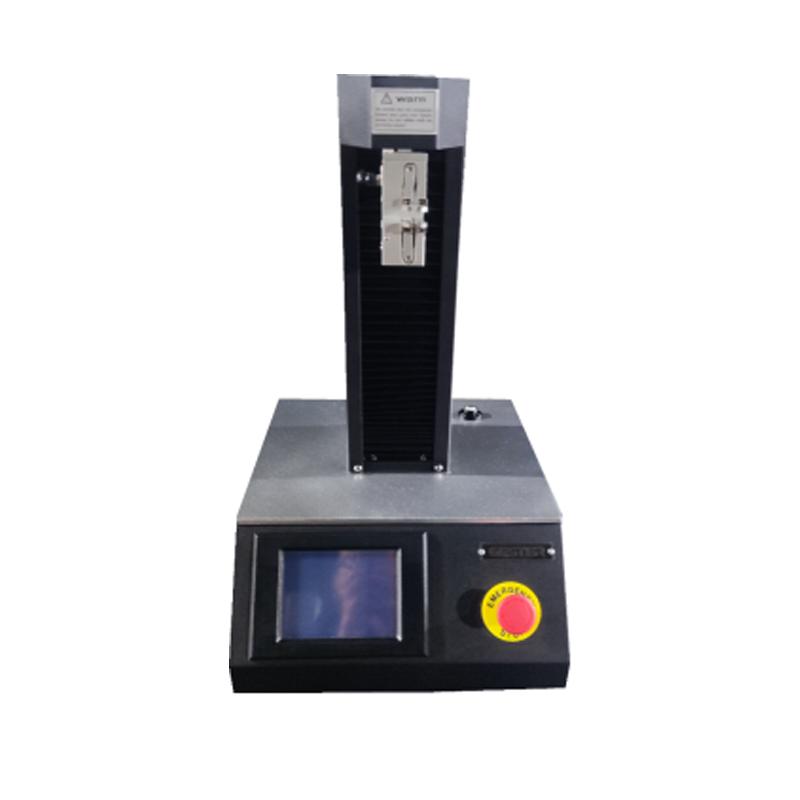All You Required to Learn About Robotic Vision and Its Applications in Advanced Optical Dimension Solutions
Robotic vision represents a considerable development in the junction of computer system vision, expert system, and artificial intelligence. This modern technology boosts the accuracy of optical measurement systems, enabling real-time data evaluation and improved quality control. Its effect covers several sectors, from producing to medical care. Nonetheless, the evolving landscape of robot vision questions concerning future capabilities and applications (fibre testing equipment). What innovations lie ahead in this transformative area?
Comprehending Robotic Vision: Secret Concepts and Technologies
Robotic vision encompasses the innovations and methods that make it possible for equipments to translate and understand visual details from their environment. This area combines elements of computer vision, expert system, and artificial intelligence to facilitate computerized decision-making based on aesthetic data. Secret ideas consist of photo processing, which includes the improvement and evaluation of pictures to draw out significant functions, and things recognition, which permits machines to determine and identify things within a scene.

The Combination of Robotic Vision With Optical Dimension Equipments
As markets progressively demand accuracy and efficiency, the integration of robotic vision with optical dimension systems has actually become a transformative method. This synergy enables robotics to regard and interpret their surroundings, enhancing the capability of optical measurement systems to assess and analyze objects with unparalleled accuracy. By outfitting optical sensing units with innovative imaging modern technologies, robotic vision makes it possible for real-time information collection and processing, promoting prompt adjustments to dimension parameters.
In addition, the combination equips automated systems to discover variants in dimensions, surface quality, and placement, which are crucial in high quality control procedures. Improved algorithms, such as machine knowing, additional augment this integration by enhancing the systems' capability to adapt to different atmospheres and situations. The assimilation not only simplifies dimension processes however likewise minimizes errors, guaranteeing that products meet strict sector criteria, therefore strengthening the function of robot vision in the future of optical dimension systems.
Applications of Robotic Vision in Production
In modern-day manufacturing atmospheres, using vision systems has revolutionized production processes by making it possible for makers to execute jobs with amazing accuracy and rate. Robotic vision systems are significantly employed for quality assurance, where they examine items for problems and guarantee adherence to requirements. These systems use electronic cameras and progressed formulas to evaluate items in real-time, substantially decreasing the risk of human error.
Furthermore, robot vision facilitates automation in production line, enabling robotics to precisely determine components and construct them with marginal downtime. This innovation likewise boosts inventory monitoring, as vision systems can keep an eye on supply levels and discover inconsistencies, assuring a smooth supply chain.
Additionally, robot vision aids in the execution of smart manufacturing facilities, where data from vision systems can be incorporated with various other modern technologies to enhance workflows. On the whole, the applications of robotic vision in making demonstrate its essential duty in boosting performance, high quality, and productivity across various industries
Robotic Vision in Health Care: Revolutionizing Person Treatment

In rehabilitation, robot vision help in keeping an eye on patient progress and tailoring treatment sessions to private requirements. It supports physician by automating tasks such as data collection and patient tracking, enabling check it out more time to focus on direct individual interaction. Additionally, robot vision boosts telemedicine by enabling remote diagnosis and digital appointments, linking the void in between individuals and doctor. Overall, the application of robot vision in health care is changing patient care, resulting in improved outcomes, performance, and person robotic vision fulfillment.
Future Fads and Growths in Robotic Vision Modern Technology
The quick evolution of robot vision innovation assures to better boost its applications across various fields, including medical care. Future fads suggest a considerable shift in the direction of integrating expert system and artificial intelligence, enabling systems to pick up from huge datasets and boost accuracy over time. Improved sensing unit modern technologies and deep understanding formulas are expected to improve things acknowledgment capabilities, allowing robotics to analyze complicated environments better.

The combination of augmented truth (AR) with robotic vision will likely transform just how robotics help in surgical treatments and diagnostics. This harmony will certainly assist in real-time information visualization, boosting decision-making processes. In addition, miniaturization of components will certainly cause more portable and versatile robot vision systems appropriate for a selection of jobs. As these innovations unfold, sectors will certainly witness enhanced automation and effectiveness, solidifying robot vision as a foundation of ingenious technical services.
Frequently Asked Questions
What Are the Main Elements of a Robot Vision System?
The major parts of a robotic vision system include cams for image capture, processors for information evaluation, algorithms for analysis, and actuators for motion. With each other, these elements make it possible for robotics to regard and connect with their environment effectively.
How Does Robotic Vision Improve Accuracy in Measurements?
Robotic vision boosts measurement precision by making use of sophisticated imaging technologies, enabling accurate things discovery and spatial evaluation. This capability lowers human error, enhances repeatability, and allows for real-time changes, inevitably boosting total dimension reliability and efficiency.
What Industries Advantage The Majority Of From Robotic Vision Modern Technology?
Numerous industries profit greatly from robotic vision modern technology, visit our website including production, healthcare, agriculture, and logistics. These industries use boosted accuracy, effectiveness, and automation, causing improved productivity and lowered functional costs in their particular processes.
Can Robotic Vision Equipments Operate In Low-Light Issues?
Robotic vision systems can without a doubt operate in low-light conditions, making use of sophisticated sensing units and algorithms to improve picture clarity. This capacity permits them to perform properly in different atmospheres, consisting of commercial and monitoring applications, despite having minimal lighting.
What Are the Costs Linked With Implementing Robotic Vision?
The expenses related to implementing robotic vision vary significantly, influenced by components such as cams, software application, and assimilation. Additional expenditures consist of upkeep, training personnel, and prospective upgrades to existing systems, which can collect with time.